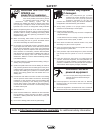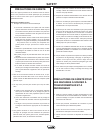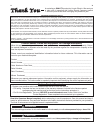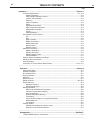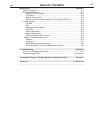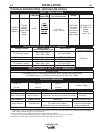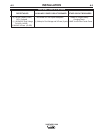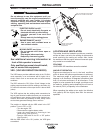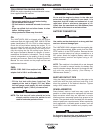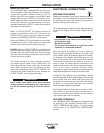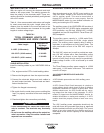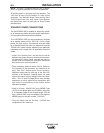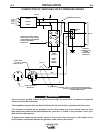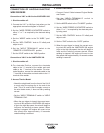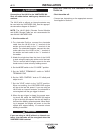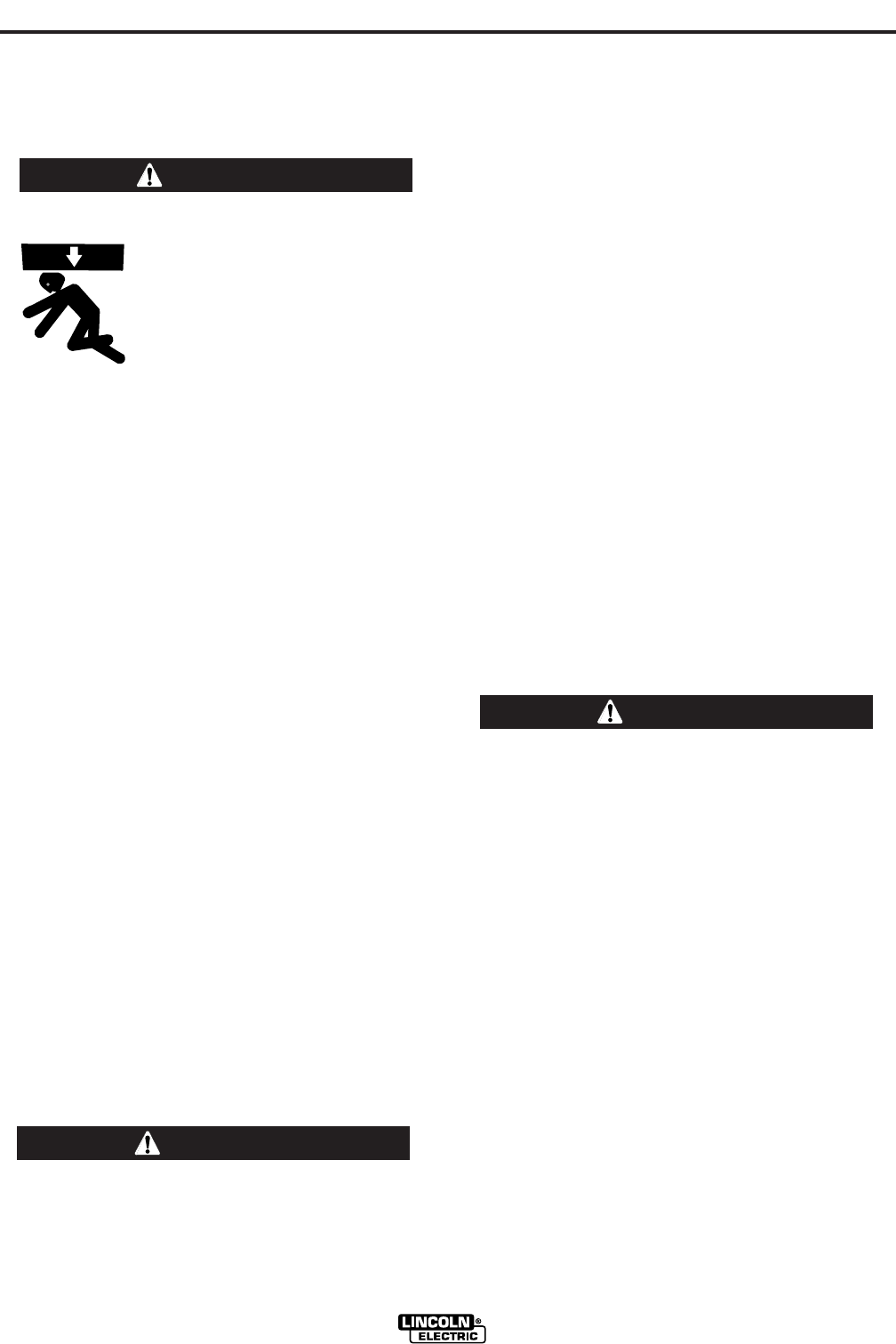
%*+##+ &%
-%+S
- #$&,%+ %
?BDAB7D>K?AG@F765A@57@FD3F76>A36E?3K
53GE7G@EF34>7H7:;5>7:3@6>;@93@6F;D7EADAF:7D
5A?BA@7@FEFA83;>
R&@>KFD3@EBADFF:;ECG;B?7@FA@E7DH;5734>7
H7:;5>7EI:;5:3D7D3F763@667E;9@768ADEG5:
>A36E
R;EFD;4GF743>3@573@6E75GD7>A36EEAH7:;5>7
;EEF34>7G@67D5A@6;F;A@EA8GE7
RA@AF7J5776?3J;?G?D3F76>A36E8AD5A?BA
@7@FEEG5:3EEGEB7@E;A@3J>7E3@6F;D7E
R$AG@F7CG;B?7@F43E7FA?7F3>476AD8D3?7A8
H7:;5>7
RA>>AIH7:;5>7?3@G835FGD7D\E;@EFDG5F;A@E
------------------------------------------------------------------------
.)% %
+&. %
Use a recommended trailer for use with this equipment for road,
in-plant and yard towing by a vehicle(1). If the user adapts a
non-Lincoln trailer, he must assume responsibility that the
method of attachment and usage does not result in a safety
hazard or damage the welding equipment. Some of the factors
to be considered are as follows:
1. Design capacity of trailer vs. weight of Lincoln equipment and
likely additional attachments.
2. Proper support of, and attachment to, the base of the weld-
ing equipment so there will be no undue stress to the frame-
work.
3. Proper placement of the equipment on the trailer to insure
stability side to side and front to back when being moved
and when standing by itself while being operated or ser-
viced.
4. Typical conditions of use, i.e., travel speed; roughness of sur-
face on which the trailer will be operated; environmental con-
ditions; like maintenance.
5. Conformance with federal, state and local laws.
(1)
(1) Consult applicable federal, state and local laws regarding specific requirements for use on public high-
ways.
# + %
The VANTAGE® 300 weighs approximately 1305 lbs.
(592kg.) with a full tank of fuel (1150 lbs. (522kg.) less
fuel). A lift bail is mounted to the machine and should
always be used when lifting the machine.
#+ +,&')+ &%
At higher altitudes, output derating may be necessary. For
maximum rating, derate the machine 2.5% to 3.5% for every
1000 ft. (305m). Due to new EPA and other local emissions
regulations, modifications to the engine for high altitude are
restricted within the United States. For use above 6000
ft.(1828 m) an authorized engine field service shop should
be contacted to determine if any adjustments can be made
for operation in higher elevations.
+$')+,)&')+ &%
At temperatures above 104°F (40°C), Welder output
derating is necessary. For maximum output ratings,
derate the welder output 2 volts for every 18°F (10°C)
above 104°F (40°C).
&#.+)*+)+ %
With a fully charged battery and the proper oil, the
engine should start satisfactorily down to 5°F (-15°C).
If the engine must be frequently started at or below
23°F (-5°C), it may be desirable to install cold-starting
aides. The use of No. 1D diesel fuel is recommended
in place of No. 2D at temperatures below 23°F (-5°C).
Allow the engine to warm up before applying a load or
switching to high idle.
%AF7 Extreme cold weather starting may require
longer glow plug operation.
,@67D@A5A@6;F;A@EE:AG>67F:7DADAF:7DEF3DF;@9
8>G;6E47GE76I;F:F:;E7@9;@7
------------------------------------------------------------------------
.)% %
R#;8FA@>KI;F:7CG;B?7@FA8367CG3F7
>;8F;@953B35;FK
R7EGD7?35:;@7;EEF34>7I:7@>;8F
;@9
RA@AF>;8FF:;E?35:;@7GE;@9>;8F43;>
;8;F;E7CG;BB76I;F:3:73HK3557E
EADKEG5:3EFD3;>7DAD93E5K>;@67D
## % RA@AF>;8F?35:;@7;8>;8F43;>;E
(, '$%+53@63?3976
53GE7;@<GDKRA@AFAB7D3F7?35:;@7I:;>7
EGEB7@6768DA?>;8F43;>
--------------------------------------------------------------------------------
.)% %



